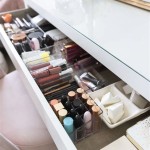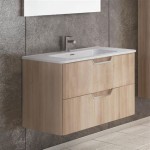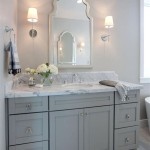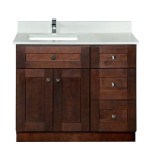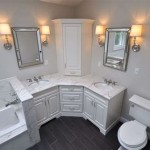Choosing the Best Bathroom Vanity Light Bulbs: A Guide
Bathroom vanity lighting plays a crucial role in creating a functional and aesthetically pleasing space. The right light bulbs can significantly impact the ambiance, visibility, and overall experience of your bathroom. With a wide variety of options available, selecting the best bulbs for your vanity can seem daunting. This guide will explore the essential factors to consider, helping you make informed decisions for optimal bathroom illumination.
1. Understanding Light Bulb Types and Features
The first step in choosing the right vanity light bulbs is understanding the different types available.
Incandescent Bulbs
These traditional bulbs emit a warm, yellowish light and are known for their affordability. However, they are energy-inefficient and have a shorter lifespan compared to other options.
Halogen Bulbs
Halogen bulbs offer brighter light and better color rendering than incandescent bulbs. While they are more energy-efficient, they still generate heat and have a relatively shorter lifespan.
Fluorescent Bulbs
Fluorescent bulbs are known for their energy efficiency and long lifespan. They come in various color temperatures, offering different shades of white light.
LED Bulbs
LED bulbs are considered the most energy-efficient option, offering long lifespans and a wide range of color temperatures. They emit less heat and are available in various shapes and sizes to suit different vanity fixtures.
2. Considering Color Temperature and Light Output
The color temperature of a light bulb is measured in Kelvin (K). A lower Kelvin value (2700-3000K) indicates a warmer, yellowish light, often used in bedrooms and living rooms for a cozy ambiance. A higher Kelvin value (4000-6500K) indicates a cooler, whiter light, suitable for tasks requiring precise visibility, such as kitchens and bathrooms.
Light output is measured in lumens, which indicates the brightness of a bulb. Bathrooms usually require brighter light than other rooms, so choosing bulbs with higher lumen output is recommended.
3. Matching Bulbs with Vanity Fixtures
The design of your vanity fixture will influence the type of bulbs you can use. Consider the following factors:
Bulb Base Type
Ensure the bulbs you choose have the correct base type, such as E12, E14, E26, or E27, to fit your vanity fixture.
Bulb Shape
The shape of the bulb should complement the design of the vanity fixture, whether it's a standard A-shaped bulb, a globe-shaped bulb, or a unique decorative design.
Bulb Wattage
The wattage rating of the bulbs should not exceed the maximum wattage specified for your vanity fixture.
4. Choosing the Right Features for a Bathroom
Bathrooms have specific requirements for vanity light bulbs due to the humidity and potential for splashing water.
Dimmable Functionality
Dimmable light bulbs allow you to adjust the brightness level to suit different needs, creating a relaxing ambiance or providing adequate light for grooming tasks.
Damp or Wet Location Rating
Bathrooms are considered damp or wet locations, so ensuring your bulbs have the appropriate rating to withstand moisture is essential. Look for bulbs labeled "damp" or "wet" for safe operation.
Investing in the right bathroom vanity light bulbs enhances both functionality and aesthetics. By understanding the factors discussed above, you can make informed decisions for the best possible lighting experience in your bathroom.

Best Bathroom Lighting For Your Home The

Transform Your Bathroom With These Top Vanity Lighting Ideas

How Do I Improve The Lighting In My Dingy Bathroom Wirecutter

Bathroom Lighting 6 Best Types Cost And Which To Choose Modernize

Best Bathroom Vanity Lighting Lightology

What Wattage Is Best For Bathroom Lighting 2025 Badeloft
:strip_icc()/101756147-fedf4384387a4f7f848159f6cf521d8e.jpg?strip=all)
30 Bathroom Lighting Ideas For Every Decorating Style

Top 7 Best Vanity Bulbs For Perfect Bathroom Lighting

8 Bathroom Light Fixtures To Try In Your Home

Best Bathroom Lighting For Your Home The

